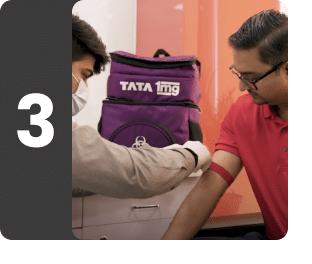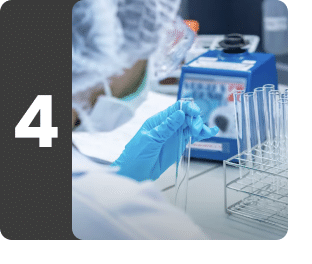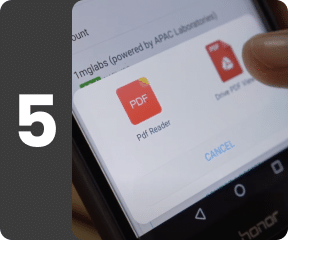AFB Staining, Sputum
Understanding AFB Staining, Sputum
What is AFB Staining, Sputum?
The AFB Staining, Sputum test is used to identify the presence of Mycobacterium species, particularly Mycobacterium tuberculosis, the causative organism of tuberculosis (TB). This test involves staining sputum samples to identify acid-fast bacilli under a microscope. It helps to diagnose active TB infections and distinguish them from other respiratory infections.
The AFB Staining, Sputum is an important test used to find acid-fast bacilli (AFB) in samples, primarily sputum (the mucus you cough up from the lungs). This test is designed to detect Mycobacterium tuberculosis, the bacteria responsible for tuberculosis (TB). These bacteria have a special waxy cell wall that prevents them from being easily washed away by acids during the staining process. This is why the AFB Staining, Sputum test is effective. The presence of AFB in sputum indicates a potential active TB infection, a serious concern that can lead to severe respiratory illness.
The AFB Staining, Sputum is recommended when the doctor suspects tuberculosis, particularly in cases of chronic respiratory symptoms including persistent cough, chest pain, coughing up blood, an evening rise of body temperature, night sweats, weight loss, and fatigue. This test is vital in diagnosing pulmonary tuberculosis and differentiating it from other respiratory infections. It is important in areas where TB is prevalent. Early diagnosis can significantly improve treatment outcomes and reduce transmission. Additionally, AFB Staining, Sputum can detect other non-tuberculous mycobacterial species, which are less common but can also cause respiratory illness. Identifying the presence of AFB allows doctors to initiate appropriate treatment promptly. It helps prevent further transmission and complications.
A positive result indicates that acid-fast bacilli are present in the sputum, suggesting an active TB infection. However, it is important to note that not all individuals with TB will have a positive AFB smear, especially in the early stages or in extrapulmonary TB cases. A negative result does not entirely rule out the disease, particularly if clinical suspicion remains high. In such cases, further testing, including culture and molecular methods, may be needed for a clear diagnosis.
Patients should provide the sputum sample in open air. Before giving the sample, they should not eat, drink, smoke, brush their teeth, or use mouthwash. Brushing teeth and gargling with water right before collecting the sample can help reduce bacteria from the mouth. It's best to collect the sputum in the morning when it contains more concentrated bacteria from overnight secretions. To prevent contamination of the outside of the container, patients should hold it under their lower lip to catch the entire cough sample. A deeply expectorated sputum sample needs to be given. Additionally, inform your doctor about any medications or supplements you're taking, as some may affect the test results.
Test result ranges are approximate and may differ slightly between labs depending on the methodology and laboratory guidelines. It is important to discuss the test results with the doctor who will consider other factors such as any medical history, symptoms, underlying medical conditions, and additional test results to establish a diagnosis of TB disease accurately.
What is AFB Staining, Sputum used for?
The AFB Staining, Sputum test is done:
- To detect the presence of Mycobacterium tuberculosis in sputum samples from individuals with respiratory symptoms.
- To confirm or rule out a diagnosis of active pulmonary tuberculosis.
- To monitor treatment response in individuals diagnosed with tuberculosis.
- To identify potential outbreaks of tuberculosis within communities, aiding public health interventions.
- To evaluate and diagnose other non-tuberculous mycobacterial infections.
What does AFB Staining, Sputum measure?
The AFB Staining, Sputum detects the presence of acid-fast bacilli (AFB) in sputum samples, primarily targeting Mycobacterium tuberculosis, the bacterium responsible for tuberculosis (TB). The process involves staining the sputum sample with a specific dye that binds to the waxy cell wall of mycobacteria. After staining, the sample is subjected to acid-alcohol decolorization. Only acid-fast bacilli will retain the color, allowing them to be visualized under a microscope.
A positive AFB stain indicates the presence of mycobacteria. It suggests a high likelihood of active TB and prompts further testing, such as culture for confirmation and drug susceptibility. Conversely, a negative result does not rule out TB, especially if symptoms persist, necessitating additional tests or repeat sputum samples.
AFB Staining, Sputum can also detect non-tuberculous mycobacteria, which are less common but can still cause respiratory illnesses. Recognizing these species is important for appropriate treatment, as their management differs from that of Mycobacterium tuberculosis. Overall, AFB Staining, Sputum is a vital diagnostic test for confirming Mycobacterial infections. It helps guide treatment and public health measures to prevent the spread of tuberculosis.
Answers to Patient Concerns & Frequently Asked Questions (FAQs) about AFB Staining, Sputum
Frequently Asked Questions about AFB Staining, Sputum
Q. What is AFB Staining, Sputum test?
Q. How is the test performed?
Q. What symptoms might lead to the AFB Staining, Sputum test?
Q. Do I need to prepare for the test?
Q. What do the test results mean?
Q. What should I do if I receive a positive result?
Q. Can I have a negative result and still have tuberculosis?
Q. What is the difference between AFB Staining and a TB culture?
Q. How often should I be tested for the AFB Staining, Sputum?
Q. What happens if TB is not treated timely?
Q. How can I reduce my risk of tuberculosis?
Q. How does Tata 1mg ensure accurate lab test results?
Book a AFB Staining, Sputum test at home near me





Other tests









